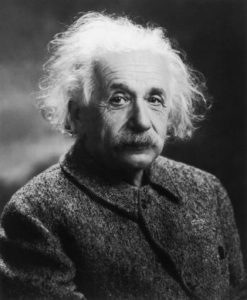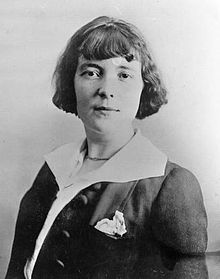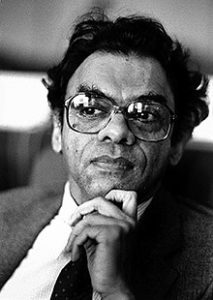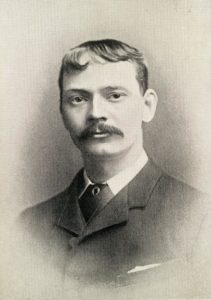We have decided to create the most comprehensive English Summary that will help students with learning and understanding.
A Truly Beautiful Mind Summary in English by Albert Einstein
A Truly Beautiful Mind by Albert Einstein About the Author
| Author Name | Albert Einstein |
| Born | 14 March 1879, Ulm, Germany |
| Died | 18 April 1955, Penn Medicine Princeton Medical Center, New Jersey, United States |
| Spouse | Elsa Einstein (m. 1919–1936), Mileva Marić (m. 1903–1919) |
| Education | University of Zurich (1905), ETH Zürich (1896–1900) |

A Truly Beautiful Mind Introduction to the Chapter
A Truly Beautiful Mind is brief biographical sketch of the great genius Albert Einstein. It gives the readers a glimpse into his early life and his contribution to the world of science. Einstein was a visionary who never went with the flow, but charted his own path once he knew that he was right. He was not afraid of being at odds with anyone, including his teachers. He was a strong man who stuck to his principles and ideas.
A Truly Beautiful Mind Summary in English
Albert Einstein was bom on 14th March, 1879 in Ulm, Germany. As a child he did not show any trace of intelligence. On the contrary, his mother, too, thought Albert was a freak as to her, his head seemed much too large. Albert Einstein was considered a slow child, and much to his parents’ worry, he started speaking after he turned two-and-a-half years old and when he did leam to speak, he uttered every word twice. Otto Neugebauer, the historian of ancient mathematics, writes that the young Albert broke his silence at the supper table one night to say, “The soup is too hot.” Greatly relieved, his parents asked why he had never said a word before. Albert replied, “Because up to now everything was in order.”
An introvert as a child, Einstein was nicknamed ‘Brother Boring’ by his playmates. As a result, most of the time he played by himself and loved mechanical toys. Once, the headmaster of his school gave a very adverse report about him to his father stating that he would never succeed in any profession. Still, Einstein started to leam playing.the violin at the young age of six as per his mother’s wish. Einstein was a gifted amateur violinist, and he maintained this skill throughout his life.
While at High School, in Munich, Einstein proved to be a good student and scored good marks. However, he loved his freedom and felt suffocated because of the stem discipline and regimentation in his school. In fact, he often clashed with his teachers. He thus left the school in Munich and shifted to German-speaking Switzerland to keep up his studies in a liberal environment. Einstein was exceptionally intelligent in mathematics and deeply interested in physics. After finishing school, he joined the University in Zurich because the atmosphere there was more liberal and amenable to new ideas and concepts. While studying there he fell in love with a Serbian fellow student, Mileva Marie, who was equally intelligent. Einstein got married to Mileva in 1903, and had two sons. However, the marriage did not last long and after their divorce in 1919, he married his cousin Elsa.
After graduating from the University in 1900, Einstein could not easily find a job. He worked as a teaching assistant and gave private lessons until he found a job as a technical assistant in a patent office in Bern in 1902. However, while he was supposed to be assessing other people’s inventions, Einstein was actually developing his own ideas in secret. He is said to have jokingly called his desk drawer at work the “bureau of theoretical physics.”. In 1905 he published a paper on ‘Special Theory of Relativity’ and came out with the formula: E = mc2
This theory of Einstein gained world-wide acclaim.
Einstein rose to international fame by publishing his “General Theory of Relativity” in 1915. His findings were proclaimed as a scientific revolution and he was awarded the Nobel Prize for Physics in 1921. He emigrated to America in 1933 when the Nazis came to power in Germany. Five years later, American Physicists became upset at the discovery of nuclear fission in Berlin. They were afraid that this discovery could enable the Nazis to build an atomic bomb. Einstein wrote a letter to the American President, Franklin D. Roosevelt to apprise him of the extent of destruction a nuclear bomb could cause. His letter was taken very seriously by the President and the Americans secretly prepared their own atomic bomb which they dropped on Hiroshima and Nagasaki in 1945.
Einstein was shaken terribly by this inhuman act. He wrote another letter to the United Nations proposing the formation of a world government, though this letter did not have any impact. Einstein spent his later days in politics advocating for world peace and democracy. He died at the age of 76 in the year 1955.
A Truly Beautiful Mind Title
Einstein was a visionary and one of the most recognized and well-known scientists of the century. He made immense contribution to the world of science by putting forward startling theories. As a human being, he preached peace and democracy. Thus, his mind was really beautiful and rich with new ideas and human concerns. This makes the title.of this biographical piece A Truly Beautiful Mind very appropriate as it acknowledges Einstein’s renowned scientific accomplishments and his humanitarian struggles to achieve peace and international cooperation.
A Truly Beautiful Mind Theme
This brief sketch of the life and achievements of the great genius and visionary, Albert Einstein, reveals that great men are not necessarily noticed during early years. Einstein comes across as a fairly ordinary person who has his likes and dislikes, his streaks of rebellion, and his problems. The author focuses on two aspects of Einstein’s personality – as a scientist and as a human being. Albert Einstein, the scientist, is best known for his path – breaking discoveries; Albert Einstein, the humanitarian, is known for his pacifism and political activism as he worked for peace and democracy in the world.
A Truly Beautiful Mind Message
The life and achievements of the famous scientist Einstein gives us the message that a truly beautiful mind possesses not only vision but also makes sincere efforts to use this vision for the well-being of mankind. Science should be solely devoted to the promotion of world peace and prosperity. If used for destructive purposes, the scientific inventions and discoveries can wreak havoc on humanity.
A Truly Beautiful Mind Characters
Albert Einstein
Albert Einstein comes across as a genius who made path-breaking discoveries in physics and a peace-loving human being who spread the message of love, liberty and peace.
During his childhood, Einstein did not show any spark of genius as a child. He was a slow child who started speaking very late. Even his mother considered him to be a freak as he had a large head and the headmaster of his school had such a poor opinion about him that he told his father
Einstein would never achieve success in any career that he chose. However, Einstein proved to be a good student as he had special interest and skills in mathematics and physics as also music and playing the violin.
Einstein’s love for freedom dated back to his school days. He felt stifled in his school in Munich because of excessive discipline. He chose to study in German-speaking Switzerland in a school with liberal environment. When the dictatorial Nazis took over Germany, Einstein left for America because he was averse to every type of authority.
Einstein was a great scientist whose theories of relativity and gravity created a stir in the world of science. He was awarded the Nobel Prize and got numerous other honours. However, despite his achievements as a scientist,
Einstein was a lover of arts and literature. Along with Mileva Marie he opposed philistines, or people who did not like art, literature or music. His love for mankind led him to work for peace and democracy in the world. He wanted a world government, and the destructive use of science, as in the bombing of Hiroshima and Nagasaki perturbed him. He spent the rest of his life spreading the message of pacifism.
Thus, Einstein’s traits as a scientific genius and a peace-loving human being with a deep love for freedom are amply highlighted in this biographical account.
A Truly Beautiful Mind Summary Questions and Answers
Question 1.
What did Einstein’s mother think him to be? Why?
Answer:
Einstein’s mother thought him to be a ‘freak’ or someone with an unusual physical abnormality or behavioural problem. She thought of him as a freak because his head seemed too large to her. This made him look different from the other children of his age.
Question 2.
Einstein showed no early signs of his genius one day. Comment.
Answer:
As a child, Einstein had a large head and did not start to speak till he was two-and-a-hal£ years old. Even when he did start speaking he uttered everything twice. He did not interact well with other children, and always played alone. All this showed the absence of genius.
Question 3.
What did Einstein’s playmates call hm? Why?
Answer:
Einstein’s playmates called him ‘Brother Boring’ as he could not mix up with other children. Neither did he find their games interesting nor did he know how to interact with other children. Also, he did not talk till he was two-and-a-half years old, and even then he repeated each word twice. This made his company boring to his playmates.
Question 4.
What kind of toys attracted the attention of Einstein when he was a child? Why?
Answer:
As a child Einstein was attracted only by mechanical toys. It showed his scientific temperament since mechanical toys work on some kind of scientific principles.
Question 5.
What did Einstein say about his newly born sister? Why?
Answer:
Einstein always played alone with his mechanical toys. He did not have any playmates as the other children found him boring. When his sister, Maja, was bom, he looked at his newborn sister and asked “Fine, but where are her wheels?”
Question 6.
What did the headmaster think about Einstein?
Answer:
The headmaster did not think much of Einstein. He once told his father that whatever profession he chose for Einstein, he would never make a success in his life. He thought that Einstein was incapable of achieving anything in life.
Question 7.
Which musical instrument did Einstein begin to learn? Why?
Answer:
Einstein began to learn playing the violin at the young age of six because his mother wanted him to. He kept this interest alive throughout his life and became a gifted amateur violinist.
Question 8.
How did Einstein fare in high school?
Answer:
Although as a young child Einstein was very slow, still while studying in Munich, he showed great progress in almost all the subjects and scored very good marks in almost all the subjects. He had special interest in Maths and Physics. Later on, he became a great scientist.
Question 9.
Why did Albert Einstein leave school in Munich?
Answer:
Albert Einstein left his school in Munich because he was not happy with the education system and he felt stifled by the strict regimentation of the school. He felt the environment suppressed his inquisitive scientific mind and had frequent clashes with his teachers. He felt suffocated and had to leave school.
Question 10.
Why did Einstein hate school?
Answer:
He hated school and the strict regimentation because of its extreme sense of discipline. He felt suffocated in this atmosphere. He often clashed with his teachers.





